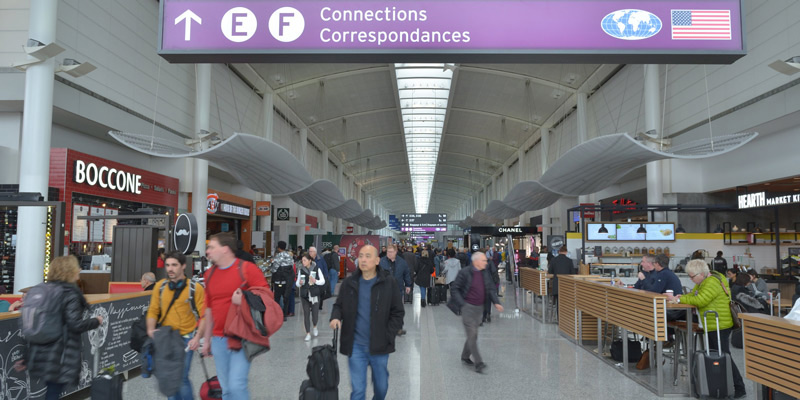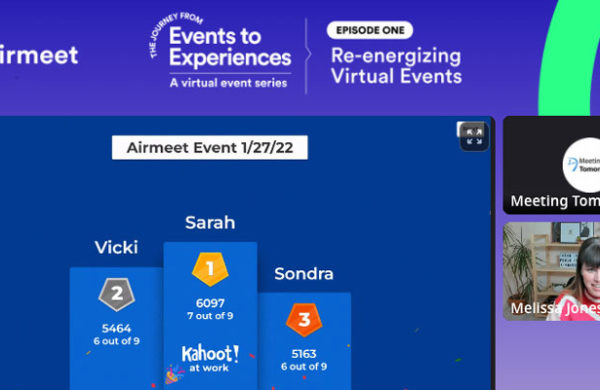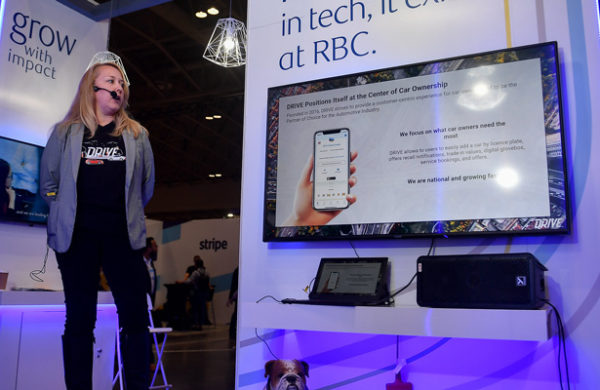
As many planners found over the last two years, there are dozens of hybrid events benefits, including sustainability. A study by researchers at Cornell found that events and conferences with 50% in-person participation (and 50% virtual) have the potential to slash overall carbon footprint and energy use by two-thirds.
Does this mean hybrid events will be the panacea for reducing the carbon emissions from the events industry? Letting people participate at home is one great strategy to include — but it’s certainly not the end-all-be-all. Even the study mentioned above lists caveats — it finds hybrid events can be more sustainable, but there are lots of factors at play including building energy use, travel, and food.
The same study by the Cornell researchers also estimates the global events industry is responsible for more than 10% of global CO2 emissions. As in-person and hybrid events creep towards pre-pandemic levels, experts say reducing CO2 emissions from events as a whole requires a multi-pronged approach beyond just keeping a portion of attendees at home.
Here are a few things to consider in playing your part in reducing the overall environmental impact of your hybrid event.
Selecting Venues & Vendors With a Strategy
By definition, hybrid events still contain some in-person element. Whether that’s 10 people presenting from a small studio, or 10,000 people in a convention hall, learning about your venue’s sustainability strategy is a key consideration in how you select venues.
Many venues have sustainability strategies they should be willing to share. One helpful place to start is by asking if they follow ISO 20121 standards, which offers guidance and best practices on controlling events’ social, economic and environmental impacts.
Here at Meeting Tomorrow, we’ve created a Venue Sustainability Checklist to go through with your potential venues. It asks questions like, “How do you work with planners to achieve their sustainability goals?” and more concrete questions like, “Do you have a power saving program?”
Plan In-Person Location(s) Carefully
Even though a portion of your attendees will be watching from home, the travel of the other attendees will make up a large portion of their carbon footprint generated by attending your event. The Cornell study finds that for hybrid events, choosing the location of your in-person locations is key to the impact on emissions.
Adding more than one hub (aka an in-person location) lowers the distance people need to travel to participate in-person. Even better if it’s accessible by public transportation. But there’s a catch: Add too many hubs, and attendees may opt to drive long distances to reach their nearest hub, which can have more intense environmental impacts than flying that distance. As the study describes, there isn’t one transit option that is always better, it depends on distance and type of energy used.
Put simply: Survey your in-person attendees. Have a clear understanding of where they will be traveling from, and what modes of transportation they plan to use (train, car, or plane.) Having all the factors can help you choose locations with the smallest travel distances and least intense impacts.
Rethink Food and Beverage Choices
Covid safety concerns created an unfortunate rise in single use plastics for utensils and food packaging. However, we now know that COVID-19 is not spread through food or through touching surfaces. Reducing single use plastics is one impactful step in making your food and beverage program more sustainable.
But there are many less visible options that make a large impact. For example, using compostable materials in combination with a venue’s composting program or sourcing ingredients from nearby vendors may reduce the overall carbon footprint of a meal. As PCMA describes, you can also partner with your F&B partner to create an overall menu that uses seasonal, local, or earth-friendly ingredients, and reduces the overall presence of beef and other ingredients that take the most resources to farm and transport.
There are many (often, delicious) options to explore. Overall, make sure your F&B partner is open to exploring options to help meet your goals.
Let Go of Traditional Virtual Attendee SWAG
Early on in the pandemic, there were tons of suggestions about sending swag to virtual attendees to make them feel engaged and part of the event. (Full disclosure: It’s something we even wrote about on this very blog!) But not much attention was given to the environmental impact of shipping these items, and what the items were. If you’re thinking about sending virtual attendees something, can you send something virtually they can redeem in their hometown? Can you give them an option to let their gift go towards an environmental non-profit? Can you only offer items that are plastic-free?
While engaging virtual attendees is key to a cohesive hybrid event, think outside the box when it comes to sending items — and whether they’re truly needed for engagement.
Purchase Carbon Offsets
Realistically, no matter how much you aim to reduce, your event will create carbon emissions. Even fully virtual events require electricity.
To mitigate the effects, consider setting aside a budget annually to purchase carbon offsets. A carbon offset is “a certificate representing the reduction of one metric ton of carbon dioxide emissions, the principal cause of climate change,” according to a explainer from Terrapass. Offsets support projects that reduce the emission of greenhouse gasses such as wind farms, energy efficiency projects, fishery, and forestry projects.
Some sources are City Forest Credits, Terrapass, and Carbon Fund. With these resources, you can calculate offsets for specific events or for entire business operations. As Carbon Fund describes, “reduce what you can, offset what you can’t.”
At Meeting Tomorrow, we purchase Carbon Offsets on a quarterly basis. We do this because we believe every company has the power to make a difference, and it’s an important stepping stone in our larger, critical mission of reducing carbon emissions over time. Over the last two years, our contributions went to the Minnesota Native American Hardwoods Conservation Project and the Calumet River Garden Gateway.
Beyond carbon offsets, or even hybrid events as a whole, integrating corporate sustainability practices into your company’s core operations is the largest, most consistent way to make an impact. Whether that’s through hiring certified Climate Change Professionals, working with sustainability consultants, measuring your organization’s and event’s greenhouse gas emissions, or creating climate action plans — it’s a comprehensive, multi-pronged approach that will reduce the industry’s carbon footprint overall.
Top photo: Flickr User Open Grid Scheduler
Are you planning a hybrid or virtual event? We’d love to learn about it! Reach out to us here to learn how we can produce your hybrid, virtual, or fully in-person event in any city nationwide.



